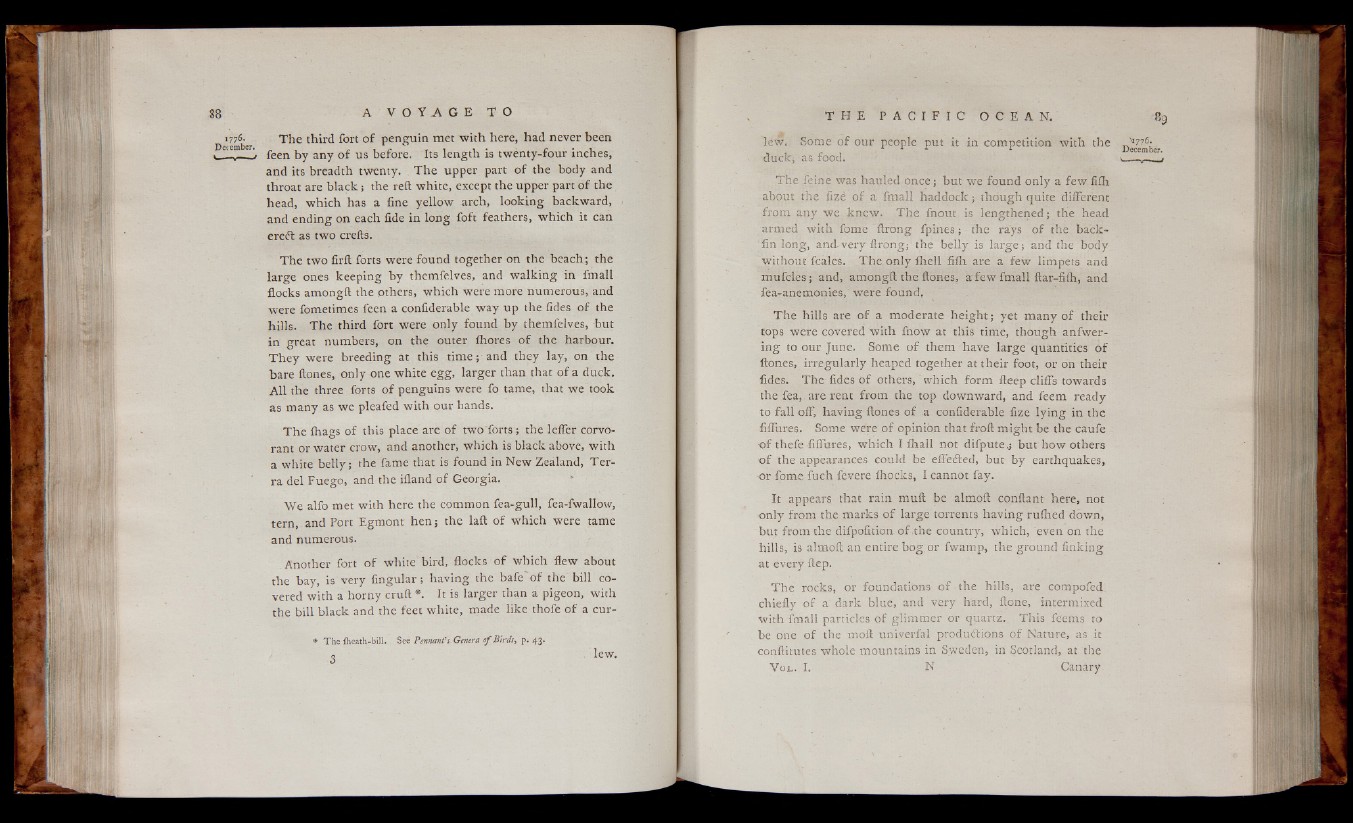
1776* The third fort of penguin met with here, had never been
. ei!^L feen by any of us before. Its length is twenty-four inches,
and its breadth twenty. The upper part of the body and
throat are black; the reft: white, except the upper part of the
head, which has a fine yellow arch, looking backward,
and ending on each fide in long foft feathers, which it can
ere ft as two crefts.
The two firft forts were found together on the beach; the
large ones keeping by themfelves, and walking in fmall
flocks amongft the others, which were more numerous, and
were fometimes feen a confiderable way up the fides of the
hills. The third fort were only found by themfelves, but
in great numbers, on the outer Ihores of the harbour.
They were breeding at this time; and they lay, on the
bare ftones, only one white egg, larger than that of a duck.
All the three forts of penguins were fo tame, that we took
as many as we pleafed with pur hands.
The ihags of this place are of two forts; the leffer corvo-
rant or water crow, and another, which is black above, with
a white belly; the fame that is found in New Zealand, Terra
del Fuego, and the ifland of Georgia.
We alfo met with here the common fea-gull, fea-fwallow,
tern, and Port Egmont hen; the laft of which were tame
and numerous.
.Another fort of white bird, flocks of which flew about
the bay, is very Angular; having the bafe'of the bill covered
with a horny cruft *. It is larger than a pigeon, with
the bill black and the feet white, made like thofe of a cur-
* The (heath-bill. See Pennant's Genera o f Birds, p. 43.
3 lew.
lew. Some of our people put it in competition with the
duck; as food.
The feine was hauled once; but we found only a few fi£h
about the fize of a fmall haddock; though quite different
from any we knew. The fnout is lengthened; the head
armed with fome ftrong fpines; the rays of the back-
fin long, and-very ftrong; the belly is large; and the body
without fcales. The only fliell fifth are a few limpets and
mufcles; and, amongft the ftones, a few fmall ftar-fiih, and
fea-anemonies," were found,
The hills are of a moderate height; yet many of their
tops were covered with fnow at this time, though anfwer-
ing to our June. Some of them have large quantities of
ftones, irregularly heaped together at their foot, or on their
fides. The fides of others, "which form fteep cliffs towards
the fea, are rent from the top downward, and feem ready
to fall off, having ftones of a confiderable fize lying in the
fiffures. Some were of opinion that froft might be the caufe
of thefe -fiffures, which I fhall not difpute 4 but how others
o f the appearances could be effefted, but by earthquakes,
o r fome fuch fevere ihocks, I cannot fay.
It appears that rain muft be almoft conftant here, not
only from the marks of large torrents having rufhed down,
but from the difpofition of the country, which, even on the
hills, is almoft an entire bog,or fwamp, the ground finking
at every ftep.
The rocks, or foundations, of - the hills, are compofed
chiefly of a dark blue, and very hard, ftone, intermixed
with fmall particles o f glimmer or quartz. This feems to
be one of the moft univerfal produftions of Nature, as it
-conftitutes whole mountains in Sweden, in Scotland, at the
Vox.. I. N Canary